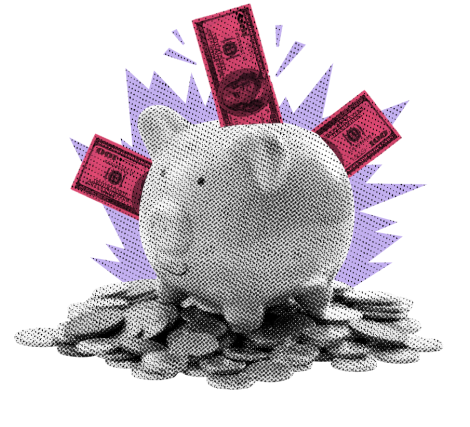
How markets sent urgent feedback to policymakers during Trump's first 100 days — and why the next 100 days will matter even more.
KEY TAKEAWAYS
- Markets offer a real-time feedback loop for policy, not just economics.
- Markets punish poor earnings, poor guidance, and poor policy signals equally.
- The administration was slower to respond to market feedback than expected—but did eventually shift to negotiation mode.
- Sector returns revealed rising fear about trade wars and economic uncertainty.
- The next 100 days should bring greater clarity, easing some volatility as real data on tariffs, employment, and inflation comes through.
MY HOT TAKES
- Markets talk louder than politicians—they are the real judge.
- Policy always eventually bends to market reality, even if it takes a beating first.
- The “trade parade” fantasy turned into a “trade grenade” pretty fast.
- Open-loop leadership is terrifying for investors.
- We’ve already seen the worst-case scenario priced in—that’s a gift.
- You can quote me: “Good companies will adapt. Bad ones? The market feedback loop can be a harsh but just judge.”
Just nod if you can hear me. Shh, the markets are listening. The markets are also talking, and the question is, “who’s listening?” The markets offer us a perfect feedback loop reflecting collective opinions on just about everything including policy… and politics. You know I only focus on policy; that’s the rule.
Let’s start with the basics. If a company misses its earnings targets. Well, Mr. Market punishes. In fairness, analysts, who like to be handheld, rely on company guidance as a baseline for their models, which for the most part, all live in the same neighborhood. So, if an analyst comes up with a number based on guidance, and the company flubs it, it demonstrates that the company must be in some sort of trouble. Was the manager who provided guidance not skilled enough to predict sales and spending over the next few quarters? Or, did something happen in the market that prevented the company from achieving those goals. In either case, Management… er, the company gets punished. “Management, get your act together,” is the message–the feedback from the market.
The market also sends feedback to regulatory bodies like the Federal Reserve. Bond yields, Fed Funds Futures, and yes, even stocks, send messages to policy makers. AND THEY WATCH THOSE despite vehemently denying it. Those markets tell the Fed what investors and consumers are expecting. Expecting strong economic growth? Stocks generally gain, treasury yields gain on inflation expectations, and the Dollar rises. Fed Funds futures reflect less near-term rate cuts. Are times going to be tough? Just flip the script. How does the Fed read all that? Consumer expectations about inflation are important, because it negatively affects consumption ⬇️ and wage expectations increase ⬆️. If the Fed sees that, it must be on alert for rate hikes. Stock declines also send a negative signal to the Fed because they affect consumption as well ⬇️. Then there are the “hard” numbers like the PCE Price Index, which we will get on Friday. ALSO the labor numbers ON THE SAME DAY. Imagine getting inflation readings and employment numbers on the same day. That is like both mandates in one bite. All these things provide feedback from consumers, investors, and the economy and get rolled up into Fed decisions. That is an important, and very active feedback loop.
Finally, we have lawmakers. You know the guys and gals that spend hours crafting media sound bites, when they are not publicly arguing with each other. Those would be Senators and Reps on the Hill. They listen to markets as well. They know that they will answer to shareholder-constituents if markets tank on their watch. They legislate accordingly. What, you think that they don’t notice when markets tank while they bicker over the debt ceiling? Of course they do, otherwise they would still be arguing. 😉
What about the Boss–the President? I am sure that they are aware, but do they take heed from markets? Most don’t, but this one… well, he does. For whatever reason–all conspiracies and finger-pointing aside, President Trump is acutely aware of the messages being sent by the markets. We learned this in his first Presidency, and we certainly expected similar behavior this time around.
What we didn’t expect was how loose the feedback would be. Made crystal clear, how much pain would the President endure before reacting? The answer, in retrospect, was more than we expected. At peak pain, stock, bond, and currency markets were all voicing their displeasure. Check out these charts and follow me to the finish.

This chart shows sector returns from President Trump’s first 100 days. Clearly all but one are underwater. Notably the two best performing sectors are defensive, meaning investors rush into these when they are expecting economic trouble. FEEDBACK. Oh, and our favorite growth sectors, tech and consumer discretionary, they got smacked the worst. Remember, tech led the broader markets higher for almost two years after the AI trade hit the scene in March of 2023.
Markets were in need of a salve after a brutal 2022 that was marred with aggressive Fed brake mashing. Those sectors took the most heat simply because they are high beta sectors, which we should have expected given the great returns they can provide. You know the basis of everything: you can’t get great returns without taking on risks. Still, the message is clear, equity markets are worried about trade wars, uncertainty, and real-life import taxes levied on companies by US Customs. FEEDBACK.

This chart shows how we got here from inauguration day to current. You could say that it was a bumpy road fraught with much… er, discomfort. This first 100 days in which the President really put the pedal to metal surprised even his staunchest followers. Bill Ackman! 👀Take a step back and remember that markets are always… always… every millisecond of every trading day, attempting to predict economic and corporate health in the future. They factor in ALL available information, and even inside information (according to the Efficient Market Hypothesis).
The challenge for the market was… well, there wasn’t much of it, information to factor in. Every sound bite, economic release, and analyst report pushed markets around with ease. At one point, investors started to believe that the President was simply not concerned about the FEEDBACK being sent. Markets started to assume that it was not the trade parade it hoped for, but rather a trade grenade. 💥 This was a trade crusade, which might defy logic and economics. What made it scary was that it appeared to be running open loop. That is a technical term meaning that there was no feedback mechanism in play. You can clearly see that peak fear in the chart above. The S&P 500 closed below 5,000 awakening market technicians and black-swan prognosticators. Check out charts 12 and 16 in my attached daily chartbook for US Dollar and yields. In fact, check them all out to get the big picture from all angles, including my favorite technical indicators. 🚨
But then there was a shift. It became clear the President got the message. The painful trade in stocks and the bond yield to currency relationship breaking down. Yields gained and currencies declined reflecting investment dollars shifting out of not just stocks but also Treasury bonds… and the US altogether. The feedback loop was working again, and the Administration shifted from “shock and awe” to the negotiation phase.
So, this first 100 days showed us a worst-case scenario and we had a chance to see that, indeed the Administration does take market feedback. We now know that bottom boundary. Or do we?
You see, this next 100 days will be a time where unknowns start to become knowns. A time where we will see if the market was correct in its assessment of what to expect. Starting next month most of the “hard” economic numbers will reflect the tariffs and counter tariffs, most of which took effect more recently. Additionally, we will see negotiations evolve with, hopefully, early signs of what the trade climate will be at the end of the day.
What we know today at day 100. The Administration is sensitive to capital markets–the feedback loop exists. Trade deals are going to be negotiated. They may take time, but parties are talking, which is a positive development. To be clear, the extreme on-hold and in-force tariffs will likely be eased, but they will not be 0%. The good news is that markets have already had a look at the worst-case scenario.
In the next 100 days, some clarity will come and, while high volatility is expected to continue, it will ease as more information becomes available. Also in these next 100 days, we are likely to get fresh tax legislation (July 4th appears to be the White House’s target date).
Finally, despite fears that the Fed will not cut interest rates, it is likely to cut interest rates in the next 100 days, which should also help ease some systematic risk. That leaves it up to companies and the idiosyncratic risk. It is absolutely true that companies are stuck on hold until trade deals get negotiated, but business still continues. The current earnings season is proceeding positively, but the next earnings season is expected to show a decline in earnings due to cyclicality and the base effect.
All companies are subject to similar tariff-challenges as their competitors. The companies whose management is able to navigate the challenges, whatever they are, will be the winners. And the ones that can’t? Well, the market feedback loop can be a harsh, but just judge. Folks, stay focused on what matters. I know it is hard, but real information is just around the corner.
YESTERDAY’S MARKETS
Stocks manage to trader higher in yesterday's despite earlier-session setbacks. Investors are pensive ahead of key earnings today and tomorrow while policy remains in flux. Today marks the 100-day mark for the Presidency, and the beginning of an earnings and economic release barrage.

NEXT UP
- FHFA House Price Index (February) is expected to have increase by 0.3% after climbing by 0.2% in the prior period.
- JOLTS Job Openings (March) may have slipped slightly to 7.5 million from 7.568 million.
- Conference Board Consumer Confidence (April) probably declined to 88.0 from 92.9.
- Important earnings today: Hilton Worldwide, Enterprise Products Partners, UPS, Ares, Regeneron, Pfizer, Labcorp, Coca-Cola, JetBlue, Sherwin-Williams, Altria, Kraft-Heinz, PayPal, American Tower, Corning, Bookings Holdings, Mondelez, Starbucks, and Frontier Communications.
.png)

